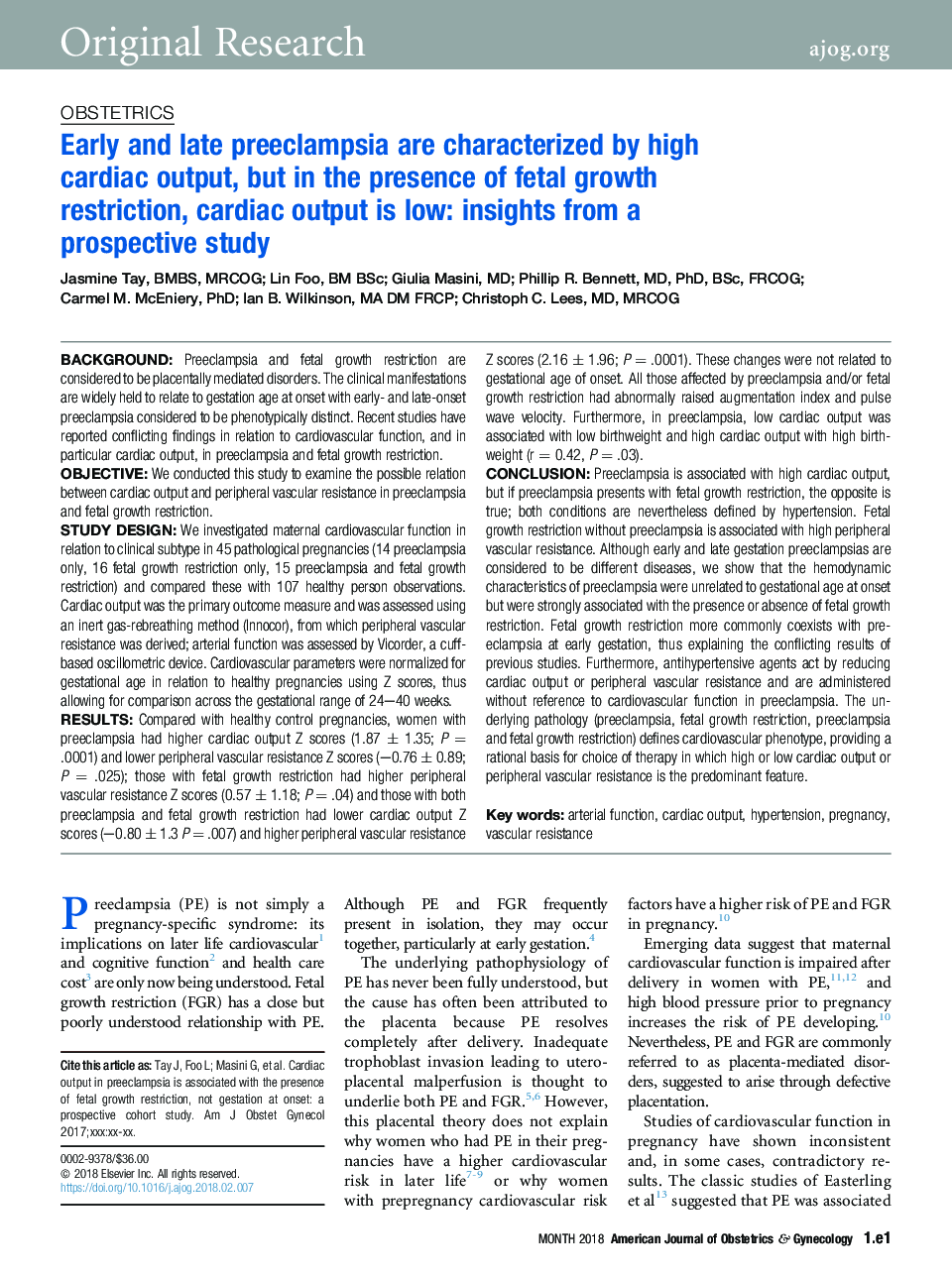| Article ID | Journal | Published Year | Pages | File Type |
|---|---|---|---|---|
| 8752502 | American Journal of Obstetrics and Gynecology | 2018 | 12 Pages |
Abstract
Preeclampsia is associated with high cardiac output, but if preeclampsia presents with fetal growth restriction, the opposite is true; both conditions are nevertheless defined by hypertension. Fetal growth restriction without preeclampsia is associated with high peripheral vascular resistance. Although early and late gestation preeclampsias are considered to be different diseases, we show that the hemodynamic characteristics of preeclampsia were unrelated to gestational age at onset but were strongly associated with the presence or absence of fetal growth restriction. Fetal growth restriction more commonly coexists with preeclampsia at early gestation, thus explaining the conflicting results of previous studies. Furthermore, antihypertensive agents act by reducing cardiac output or peripheral vascular resistance and are administered without reference to cardiovascular function in preeclampsia. The underlying pathology (preeclampsia, fetal growth restriction, preeclampsia and fetal growth restriction) defines cardiovascular phenotype, providing a rational basis for choice of therapy in which high or low cardiac output or peripheral vascular resistance is the predominant feature.
Related Topics
Health Sciences
Medicine and Dentistry
Medicine and Dentistry (General)
Authors
Jasmine BMBS, MRCOG, Lin BM BSc, Giulia MD, Phillip R. MD, PhD, BSc, FRCOG, Carmel M. PhD, Ian B. MA DM FRCP, Christoph C. MD, MRCOG,
